10 pastries you should eat in Portugal (besides custard tart)
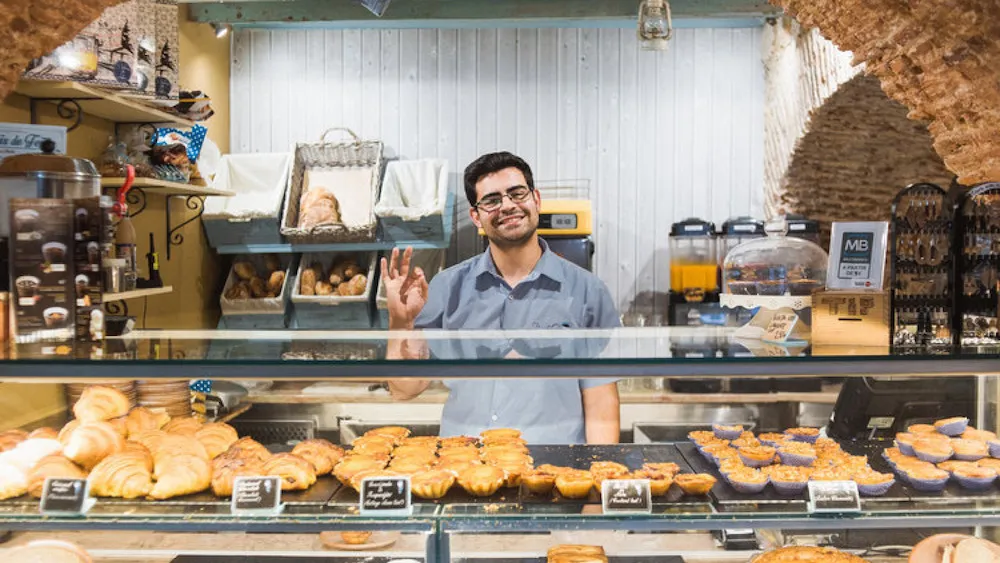
Creamy and smooth on the inside. With a crunchy exterior of flaky puff pastry to embrace its delicate core. We’re describing pastel de nata, without a doubt, the most popular pastry in Lisbon and all across Portugal. If there is one thing that many visitors look forward to trying when they travel to Portugal, it’s the uber popular Portuguese custard tarts. They truly are unmissable and we do believe it’s a fun pastime to visit several pastry shops to try different recipes, compare, contrast and finally name your favorite – ask Lisbon locals, and you’ll know that people often have a clear preference when it comes to this!
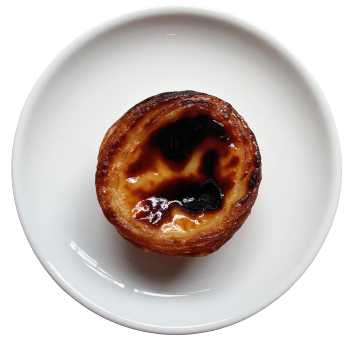
Even though some serious time should indeed be dedicated to pastel de nata explorations, we wouldn’t want for this to mean that you’d be missing out on other sweet items that day in and day out embellish the counters of Portuguese pastelarias, that is, our local style of café and pastry stores. If just by looking at the available selection you’re not sure what to try first, allow us to introduce you to the top 10 pastries you should eat during your coffee break in Portugal, in no particular order:
1. Pastel de feijão
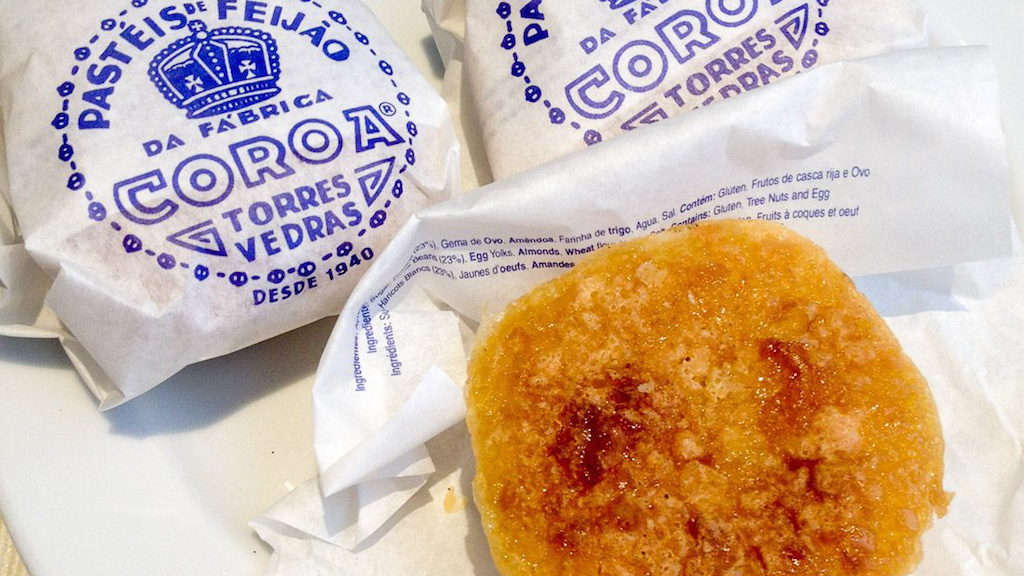
After you have tasted pastel de nata, pastel de feijão is arguably one of the most classic Portuguese pastry you ought to try.
These sweet bean tarts are incredibly common in pastry shops around the country and while the recipe of this pastry may vary depending on the establishment, it generally consists of an outside of thin delicate dough, and an inside of sugary bean puree – most commonly, made with white beans.
Sometimes dusted with icing sugar for a finishing touch, pastéis de feijão do go better with a cup of coffee to balance the sweetness – as it does end up happening with most local sweet treats anyway!
2. Pão de Deus
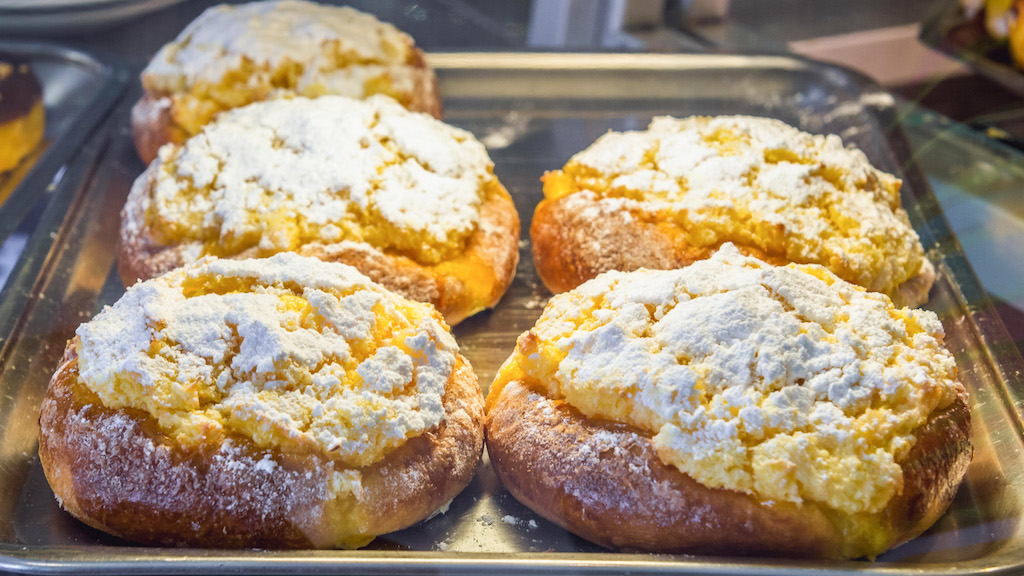 The name of this sweet bun translates as God’s bread but, let’s face it, it’s pretty sinful!
The name of this sweet bun translates as God’s bread but, let’s face it, it’s pretty sinful!
It consists of a fluffy brioche type of dough, topped with shredded coconut and sugar bound together with egg jam.
Pão de Deus is a go-to choice for breakfast or mid-afternoon snack, and you can have it plain or filled with butter, cheese, ham or a mix of all of these. If you’re into contrasts of sweet and savory, order a pão de Deus misto, that is, filled with ham and cheese, and start the day Portuguese style!
3. Croissant brioche
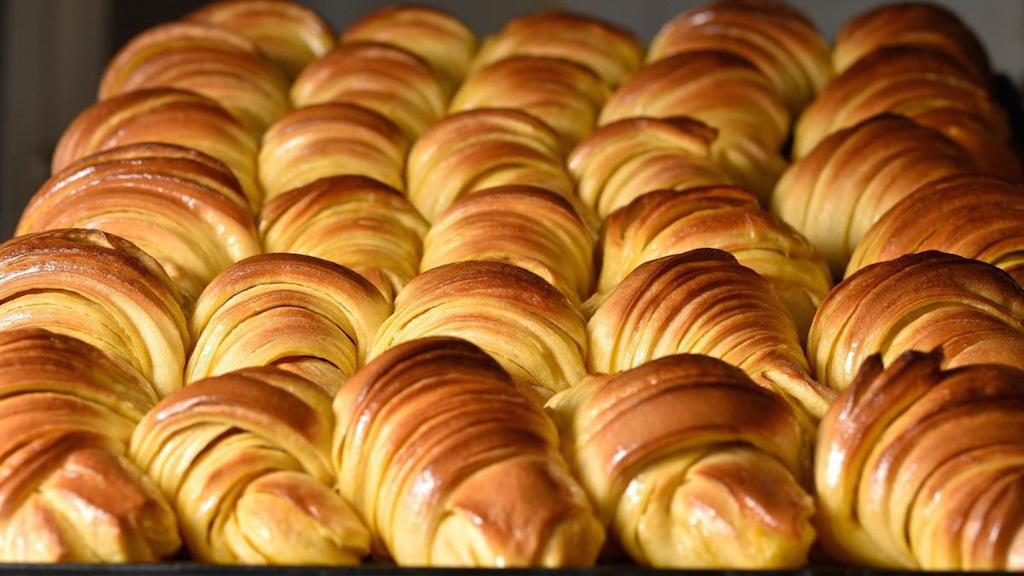
Forget everything you know about croissants when you travel around Portugal.
If the popular French croissant is all about a flaky texture and buttery consistency, here in Portugal, the most common type of croissant goes by the name croissant brioche. It’s a hybrid between a croissant, at least when it comes to its crescent shape, and a brioche bun. Dense, doughy, yet fluffy, this bright yellow cake is like milky bread taken to the next level.
If it has a particularly shiny exterior, like it often does in the northern city of Porto where croissants brioche are rather famous, it means that the pastry has been generously brushed with a syrup that, apart from sugar and common flavoring used for baking, also includes some Port wine.
Just like Pão de Deus, croissant brioche is irresistible on its own or with a savory filling of your choice.
4. Queque
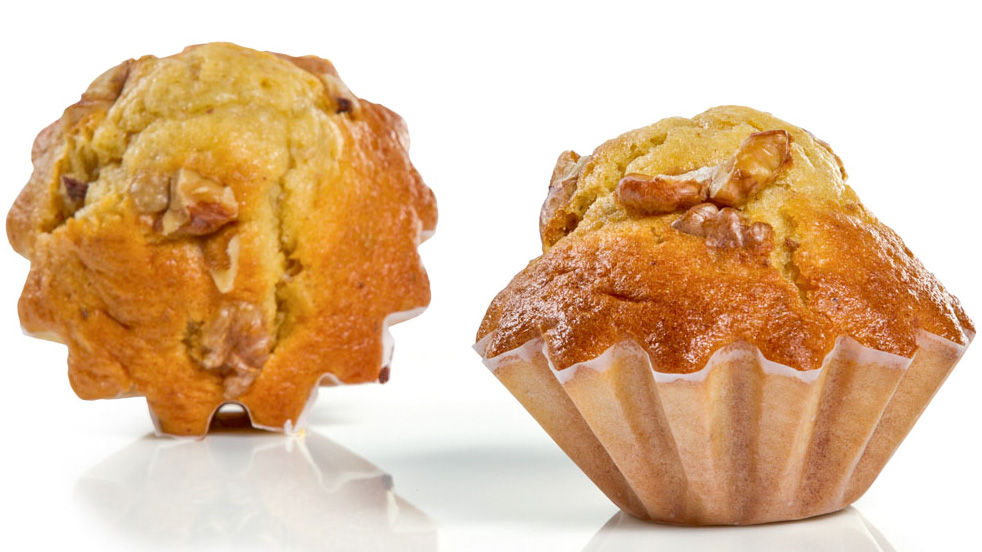 Queques, an evolution of the English word cakes, are essentially Portuguese muffins.
Queques, an evolution of the English word cakes, are essentially Portuguese muffins.
With plain flavor or add-ons such as walnuts, they may not always seem like the most exciting option on display. But being ever-present and looking pretty with their flower-shaped edges, there’s no doubt that they are very iconic in the world of Portuguese pastelarias.
Have a queque with a milky drink of your choice like a galão, Portuguese for latte, and don’t be shy to dip. This is perfect for breakfast or, if you look around and notice, as a mid-afternoon snack too!
5. Bolo de arroz
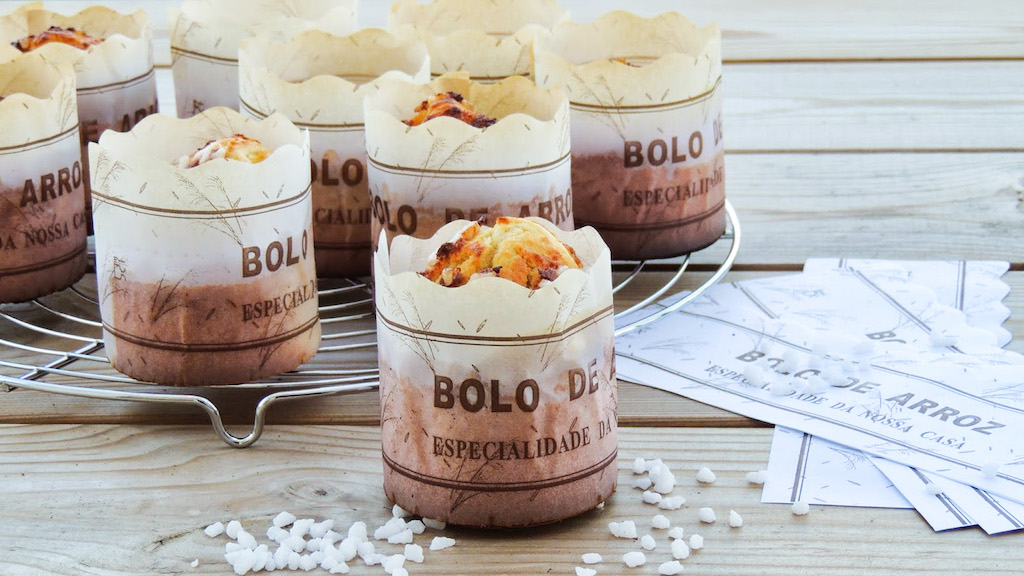 Rice muffins are true staples of Portuguese pastelarias. How can you tell them apart from other types of muffins? Well, these pastries tend to come with a wrapper that reads precisely that: bolo de arroz!
Rice muffins are true staples of Portuguese pastelarias. How can you tell them apart from other types of muffins? Well, these pastries tend to come with a wrapper that reads precisely that: bolo de arroz!
Even though they are made with some rice flour, don’t think of bolo de arroz as a gluten-free option, as wheat flour is also involved in the recipe. Also, don’t make the mistake of imagining this is a lighter pastry option.
Even a pastel de nata has less calories than bolo de arroz, that ends up involving a generous amount of fat to make it moist and yummy. That being said, count your blessings and not the calorie… and enjoy!
6. Queijada
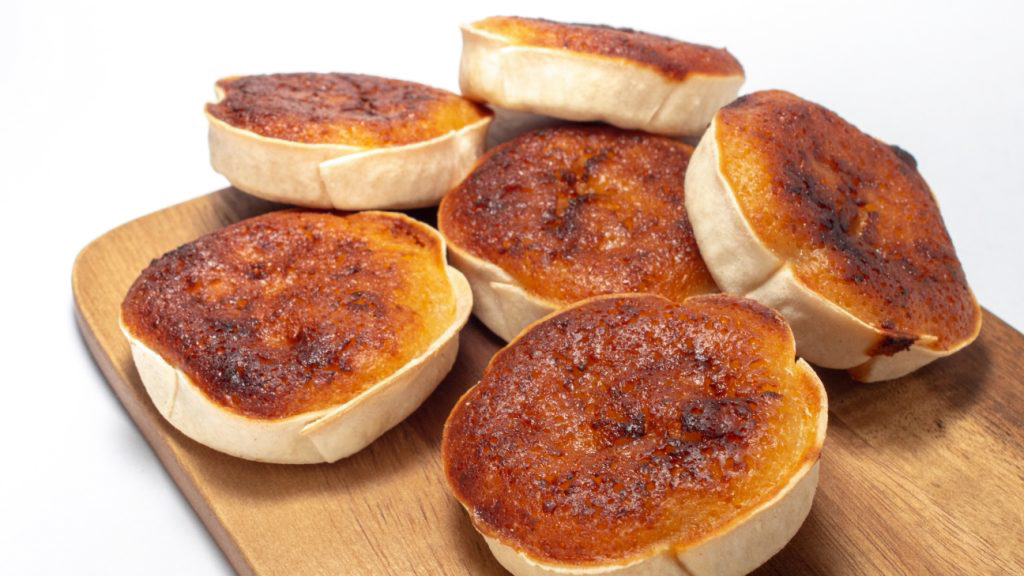 Even though we could translate queijada as cheesecake, these Portuguese cheesy sweet bites have nothing to do with the idea of New York cheesecake with fruit toppings one is often used to.
Even though we could translate queijada as cheesecake, these Portuguese cheesy sweet bites have nothing to do with the idea of New York cheesecake with fruit toppings one is often used to.
Queijadas are little pastries made of cheese. In some occasions they involve requeijão, which is a soft fresh dairy preparation similar to cottage cheese. The town of Sintra makes very popular queijadas – small, cinnamony and fairly light.
But queijadas can come in all sorts of colors and shapes: look out for queijadas with carrot, orange, milk, nuts, coconut, almonds… you name it. As long as it has cheese, it’s a queijada, even though that may end up materializing into rather distinct cakes.
7. Travesseiros
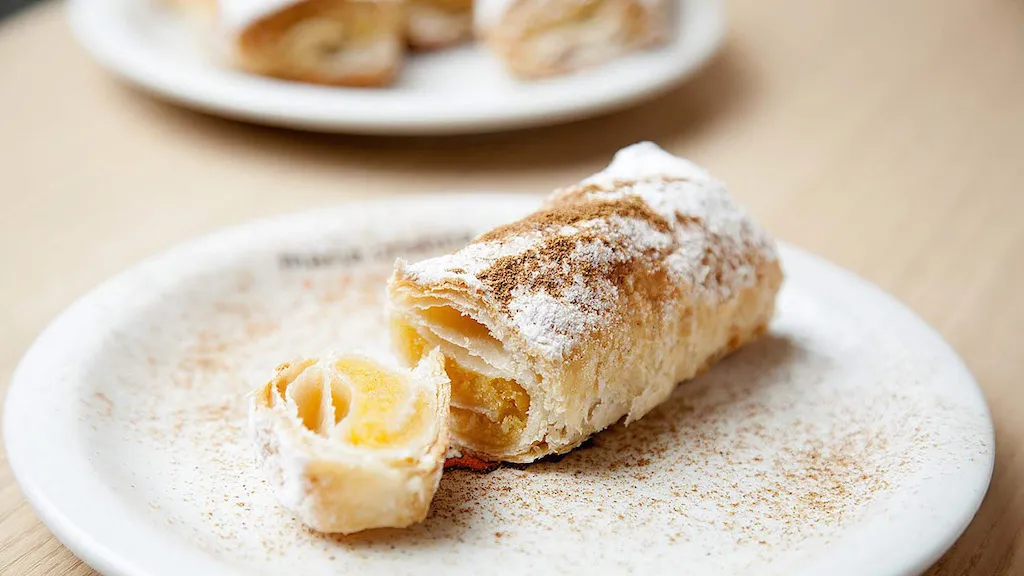 Most travelers who come to Lisbon end up tasting travesseiros on a day trip to Sintra. In this historical town, Casa Piriquita makes some of the most popular travesseiros in Portugal, even though you can also find these pastries in other stores outside Sintra, and from other iconic regions famous for Portuguese traditional pastry such as pastel de Tentugal and pastel de Vouzela.
Most travelers who come to Lisbon end up tasting travesseiros on a day trip to Sintra. In this historical town, Casa Piriquita makes some of the most popular travesseiros in Portugal, even though you can also find these pastries in other stores outside Sintra, and from other iconic regions famous for Portuguese traditional pastry such as pastel de Tentugal and pastel de Vouzela.
Expect delicately flaky puff pastry filled with a creamy stuffing of almonds, cinnamon and sugar. For extra crunch, the outside dough of travesseiros is also often dusted with sugar, so you’ll certainly need a hot drink to balance those flavours out.
As you may have gathered by now, here in Portugal we’re all about super sweet pastries and rather bitter coffee!
8. Jesuíta
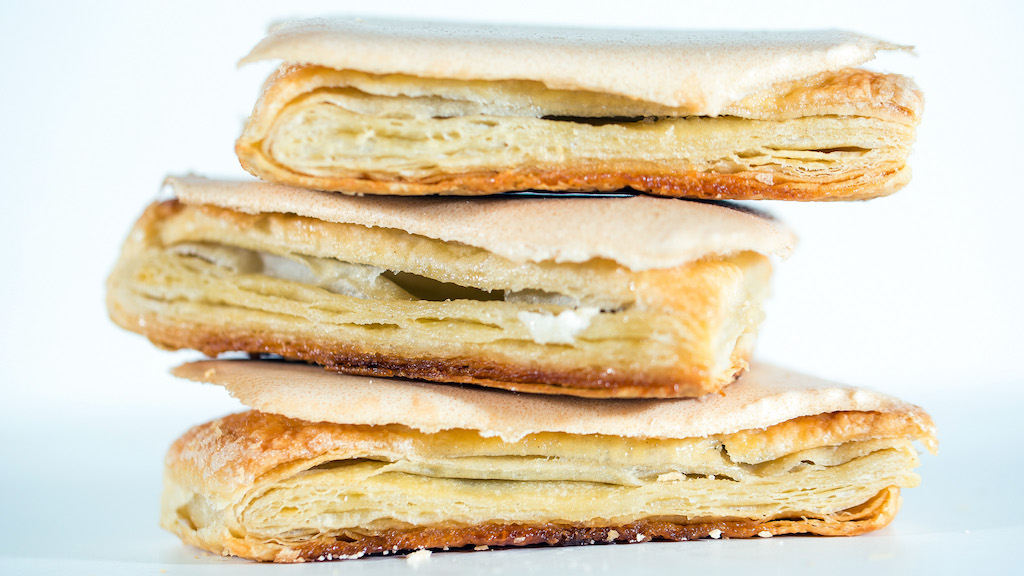 This triangular puff pastry is filled with sweet cinnamon egg cream, while the toppings may vary. Some jesuítas are sprinkled with chopped toasted almonds and powdered with icing sugar.
This triangular puff pastry is filled with sweet cinnamon egg cream, while the toppings may vary. Some jesuítas are sprinkled with chopped toasted almonds and powdered with icing sugar.
Some others are finished with dense egg jam and result in a messier experience for the hands but incredible on the mouth.
Yet the most common variation, particularly common around Porto where these pastries originated, has the jesuíta bathed in a thick layer of frosted glaze, like pictured above.
9. Bom bocado
 At a first glance, bom bocado (a fitting Portuguese name that translates as “a good time” or “a good bite”) looks like a pastel de nata – but don’t be fooled!
At a first glance, bom bocado (a fitting Portuguese name that translates as “a good time” or “a good bite”) looks like a pastel de nata – but don’t be fooled!
While its custard filling is actually similar, the exterior of bom bocado features sturdier yet buttery shortcrust pastry instead of flaky puff pastry.
10. Salame de chocolate
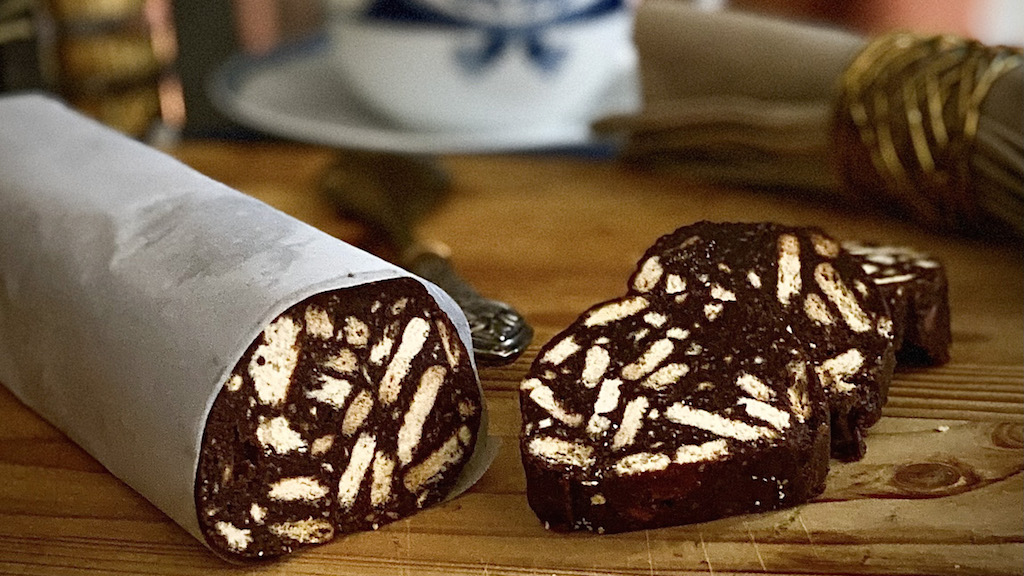 This is the kind of sweet bite you’ll want to have with an espresso after your meal.
This is the kind of sweet bite you’ll want to have with an espresso after your meal.
More than a breakfast pastry, like most of the others above, chocolate salami is a quick dessert you can have using your hands, as you sip your post lunch cup of coffee.
There’s no meat in this salami, but the crushed biscuits mixed with the sugary chocolate make it look like charcuterie. In fact, there’s even a sweet charcuterie store entirely dedicated to producing wacky flavors of salame de chocolate, in the trendy LX Factory.
Visiting a pastelaria for breakfast or a cup of coffee and a sweet bite at any moment of the day is one of the most typical yet accessible food experiences you can have in Portugal. And the good news is that you can do it every day during your visit to our country and always have a different experience. Try new cakes, sip your coffee, relax, people watch and don’t be afraid to make conversation with locals – particularly if they’re standing by the counter!
We’ll love to see your photo shoots, to know about your insights, questions, suggestions and wishes on your food & culture experiences in Lisbon and Portugal. Please share with us via Facebook, Instagram or Twitter and tag us @tasteoflisboa or #tasteoflisboa.
Feed your curiosity on Portuguese food culture:
Alcohol-free Portuguese drinks you will love to try
How to identify the perfect Portuguese custard tart
The Best Chocolate Cake in the World: easy recipes
What do the Portuguese eat for breakfast?
Real people, real food. Come with us to where the locals go.
Signup for our natively curated food & cultural experiences.
Follow us for more at Instagram, Twitter e Youtube
